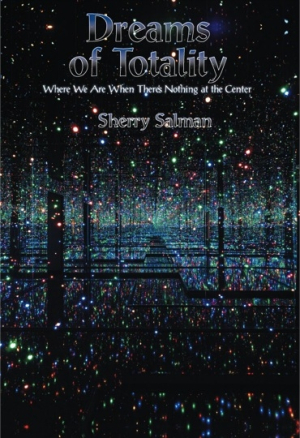Dreams of Totality
Where We Are When There's Nothing at the Center
This fascinating examination of our reaction to change is both impressive and inspiring.
Although at first glance it may seem like a New Age self-help book, Dreams of Totality: Where We Are When There’s Nothing at the Center is instead a serious and subtle study of societal reaction to change. Psychoanalyst and neuropsychologist Sherry Salman brings her considerable knowledge to bear on the ways humanity has coped with transitions in the past, and how we might approach things differently with the accelerated pace of change in the twenty-first century.
The term “dreams of totality” refers to humankind’s penchant for creating “visions of utopias and dystopias, of perfect worlds and apocalyptic end-times, of holy lands and holy wars, of universal saviors and of evil agencies,” says Salman. Her writing is rich with historical examples of humans’ attempts to create societal systems that contain chaos and distress by focusing on a central vision, from the Roman Empire to al-Qaeda. Each time we create what Salman calls a “magic circle” for protection and a sense of belonging—a religion or an economic system, for instance—we also draw boundaries that discourage new ideas and halt growth.
Salman comes at this idea from several directions. As a Jungian psychoanalyst, she offers an in-depth look at the ideas of Carl Jung and his compatriots on the power of imagination to create and destroy systems of meaning. She also presents images from art, as well as excerpts from poetry and literature that describe the cycle of grouping and regrouping that has characterized human history. Readers may be alternately exhilarated and overwhelmed by the wealth of reference points Salman offers. In just a couple of pages, she writes about the Olympians, astrology, the idealization of nature in Rousseau’s art, and modern films like Avatar. Comprehensive notes follow each chapter and offer readers a chance to pursue the different threads at greater depth.
While Salman’s writing style is academic, she doesn’t abandon readers who may not be familiar with particular concepts like Jung’s idea of archetypes or Hannah Arendt’s work on totalitarianism. She always provides adequate context. One doesn’t need to have read Brave New World, for example, to follow her description of the utopian/dystopian society Aldous Huxley created. There is a fair bit of jargon here, but again, Salman works to make it understandable. She introduces terms like “mythopoetic imagination” and “pharmakon” before regularly using them in her text so that her ideas remain accessible but not diluted.
Salman’s central tenet—that the network-based globalization of the Internet age is essentially “centerless” and may force us out of old patterns into a new level of connectedness—sometimes gets lost amid the intellectual ponderings. Each piece of information is fascinating, but as the text moves from the oracle at Delphi to the Ndembu tribe of Zambia to the poetry of Rilke, the musings can start to feel tangential. On the other hand, Salman’s vast knowledge is impressive and inspiring, and her refusal to tie everything up in a neat bow allows readers to interact with her ideas and come to their own conclusions about what the future might bring.
Reviewed by
Sheila M. Trask
Disclosure: This article is not an endorsement, but a review. The publisher of this book provided free copies of the book and paid a small fee to have their book reviewed by a professional reviewer. Foreword Reviews and Clarion Reviews make no guarantee that the publisher will receive a positive review. Foreword Magazine, Inc. is disclosing this in accordance with the Federal Trade Commission’s 16 CFR, Part 255.

